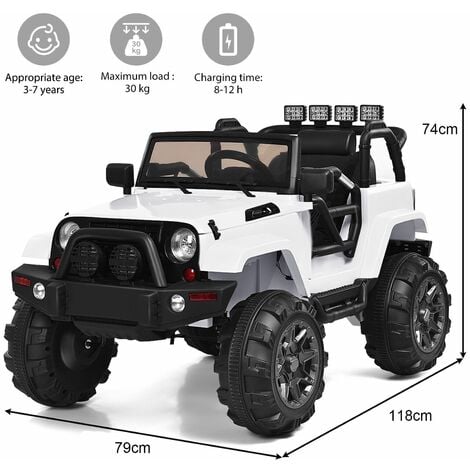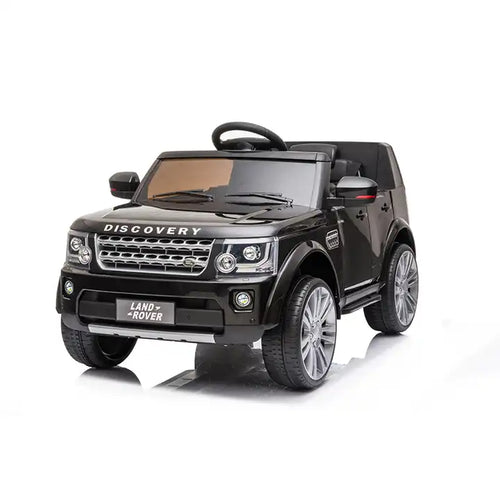Great Ideas On Deciding On Electric Kids Cars
Wiki Article
What Is The Best Way To Choose A Ride On Car For A Toddler Or An Older Child?
It's important to consider the size, age and development stage of your child before deciding on the right ride-on vehicle for them. This will ensure they are safe and enjoy the ride. Here's how you can consider these factors - Age and size
The ride-on vehicle should be designed specifically for the age of your child. They typically have the stability of a low-to-the ground design, easy-to-use controls, and basic features like steering wheels, buttons, or levers. Ride-on vehicles with an extended base provide stability and lower the possibility of them tipping.
Children older than 3 years - With age, children are able to manage ride-ons that have more advanced features and controls. Consider buying cars with adjustable seating, larger capacity weights, or even interactive features, such as music, sound effects, or working lights. To ensure your safety, look for cars that have an adjustable speed or parental control to accommodate different skill-levels.
Size
Height and Weight when choosing a vehicle for your child, take into account their height and weight. Choose a vehicle with a seat weight and height that is suitable for your child. Beware of cars that are too big or small. They can be uncomfortable and unsafe.
Comfort and Legroom Ensure your child sits comfortably and has enough legroom on the ride-on. The size of the seating area should be appropriate to the size and height of your child.
Developmental Stage
Motor Skills - When choosing the right ride-on, you should consider your child’s motor skills and ability to coordinate. While infants and toddlers may require easier controls to navigate the vehicle, older children are able to manage more complicated controls and interactive features.
Independence and Confidence Children can gain confidence and independence as they learn how to control and navigate their vehicle. Select a car that allows your child to master the ability to steer, accelerate and brake on their own. This will build their motor skills and confidence in the course of time.
When selecting a ride-on car, consider your child's preferences and preferences and. Pick a car that has characteristics, themes, or colors that appeal to your child. It could be a classic or sports vehicle or truck.
You can pick the ride-on car that is comfortable, safe and can be educational for your child by considering their age, size and their developmental stage. View the best Mercedes ride on car for more info including remote control childrens electric cars, toy cars toy car, childs car toy, electric car ride, lambo toy car, childrens electric ride on, childs ride on car, remote control childrens car, toy car, car electric ride on and more. .

What Are The Assembly And Maintenance Requirements For Kids' Ride-On Cars?
To ensure durability and safety To ensure safety and durability, the majority of ride-on cars for kids require assembly. Here are the common maintenance and assembly requirements for kid's rides-on-cars.
The majority of ride-on cars arrive partially assembled and need some assembly. Connecting steering wheels, wheels, seats, and other components as in accordance with the specifications supplied by the manufacturer are generally required.
Follow the steps for assembly with care to ensure that all components are correctly aligned and attached. Make use of the tools and hardware that are provided to complete the task.
Cleaning -
It is essential to wash the ride-on vehicle frequently to ensure its appearance and function. Make use of a soft sponge or cloth dampened with mild soap and water to wash the exterior surfaces.
Be particularly attentive to areas that are susceptible to accumulation like undercarriage, tires and wheels. To remove the grime and dirt that is difficult to remove, use a toothbrush or brush to access areas that are hard to reach.
Beware of harsh cleaners and water jets with high pressure, which can damage the electronic and paint components of your ride on car.
Battery Care -
If the ride-on vehicle is powered by a rechargeable battery, taking care of the battery is crucial to maintain performance and prolong battery life. Follow these tips to take care of your battery -
It is essential to charge the battery completely prior to the first use, and then every time you utilize it to ensure the longest running time.
The battery is not fully charged and keeping it in charge for prolonged periods of time can damage the battery and decrease its life span.
The battery for the ride-on car is best stored in a dry and cool area when not being used, away from direct sun or extreme temperatures.
Check the battery terminals periodically for damage or corrosion. Clean them when needed using an electric wirebrush or terminal cleaner.
Replace the battery if it no longer holds an charge or is showing indications of deterioration or damage.
Tire Maintenance -
Examine the tires frequently for signs of wear, damage, or loss of pressure. The tires can be inflated to the recommended levels with a bicycle or an air compressor.
The tread pattern must be examined for debris, foreign objects or other obstructions that could cause flats. Replace or repair damaged tires by taking out any obstructions.
Lubricate axles and wheel bearings regularly to reduce friction and ensure smooth movement.
Repair or replace parts when needed
Ride-on vehicles may require repair or replacement of parts due to wear and tear or damages.
Look for indications of malfunction, like unusual noises, a decrease in the power supply or erratic behavior. Check the instructions of the manufacturer or contact Customer Support for assistance in troubleshooting.
Replace damaged or worn-out components promptly to stop further damage and ensure the safety and efficiency of the ride-on automobile.
If you follow these assembly and maintenance guidelines by following these guidelines, you can keep your kid's ride-on car in top condition and enjoy hours of fun and safe playing time for your child. Take a look at the top read more on remote control childrens cars for website info including toy car for car, toy car toy car, race car toy, electric rideons, electric car ride, digger ride, toy ride, car on ride, lambo toy car, toy car for car and more. .

What Is The Most Reliable Remote Control Car For Kids? What Are Some Of The Advantages And Disadvantages?
Remote control children's vehicles are also referred to as RC cars or remote-controlled cars are available in different dimensions, styles, and price ranges to suit different preferences and budgets. Below is a list of different types of remote control children's cars, including the dimensions, cost ranges as well as pros and cons.
Electric RC Cars – Batterie-powered remote-controlled vehicles that can be used for both outdoor and indoor use. They come in various styles like buggies, trucks and sports cars.
Nitro RC Cars - Gas-powered remote-controlled cars that offer higher speeds and performance but require more maintenance and knowledge to run. They are generally larger and cost more than an electric RC cars.
Scale Models: Remotely controlled replicas of real-life vehicles such as cars, trucks, planes and boats. Scale models range from 1-10 to 1-24, with the larger scales providing more detail.
Sizes -
The sizes of remote-control cars for children range from tiny miniature versions to larger-scale replicas. The size of the vehicle could impact its speed, performance, and handling characteristics.
Micro-sized car are lightweight and compact. They are ideal for smaller children and indoor use. Larger-scale models offer more power and endurance and are ideal for off-road and outdoor driving.
Prices
The price of a remote-controlled car for children varies depending on the size, features, manufacturer, and the build quality.
Micro-sized electric RC cars can vary from $20 to $100 The larger-scale nitro and electric RC cars are available from $100 to $500 or more.
Scale models, top-quality hobby RCs may cost from several hundred bucks to over a $1,000 depending on the quality of the model and performance.
Pros and Cons
Pros -
Entertainment - Remote control for children's cars can provide hours of excitement and enjoyment for both adults and children.
Skills Development. Operating a RC car lets children develop hand-eye coordination, spatial awareness and problem-solving abilities.
Social Interaction-RC cars can be played with friends and families, encouraging social interaction and cooperation.
Aftermarket parts such as upgrades, accessories, and other items from the aftermarket can be used to modify numerous RC cars and improve their performance.
Cons
Cost - Remote control cars for kids, particularly models with premium features as well as model that are hobby-grade are often very costly.
Learning Curve: Operating an RC vehicle requires practice and skill, and even younger children may struggle with the controls in the beginning.
Maintenance: Cars in RC require regular maintenance including cleaning and oiling. Occasionally, they also require replacing parts or repairs.
Safety concerns - RC car safety could be compromised due to electrical hazards, collisions as well as other risks in the event that the vehicles aren't controlled and used with caution from an adult.
The best remote control children' cars are those that offer an educational and exciting experience for children of all age groups. When selecting the ideal one for your child, however, you must consider several factors, including the size, cost features as well as safety. Hobby-grade RC cars are suitable for older children and enthusiasts, while simpler models are best for young children and beginners. Take a look at the top rated Audi ride on car kidscars.co.uk news for blog info including riding digger, toy ride, toy a car, toy car, car toy toy, cars pedal car, remote control childrens electric cars, car electric ride on, childrens electric ride on, kidscars and more. .
